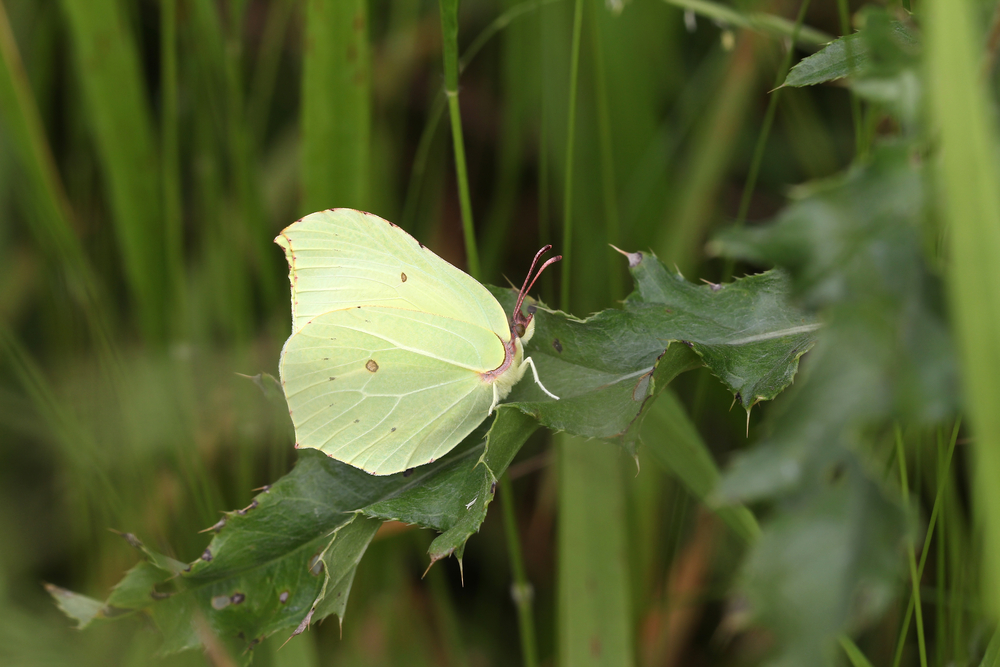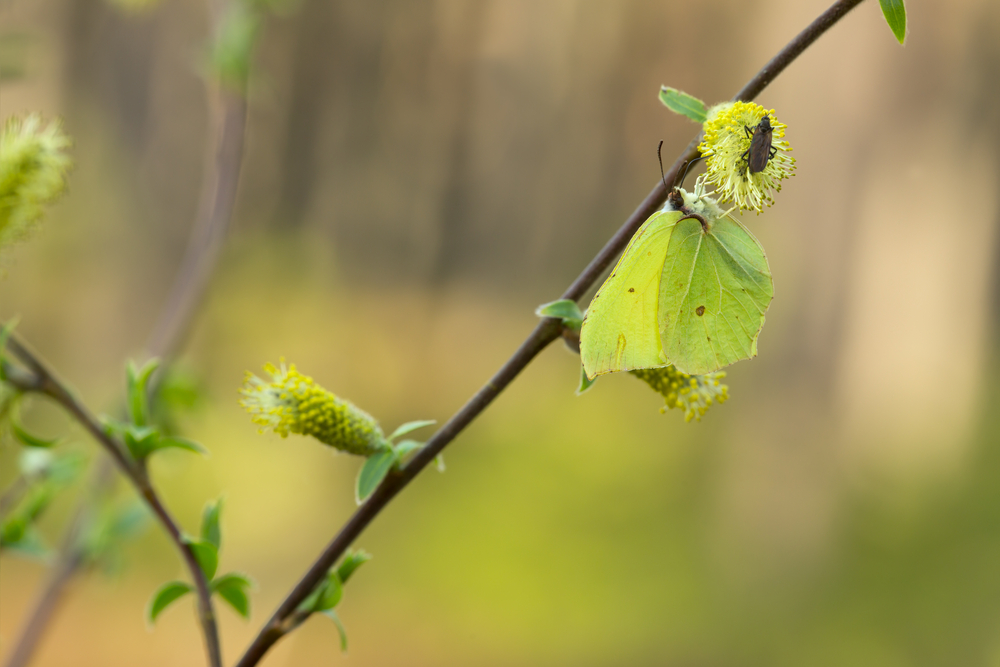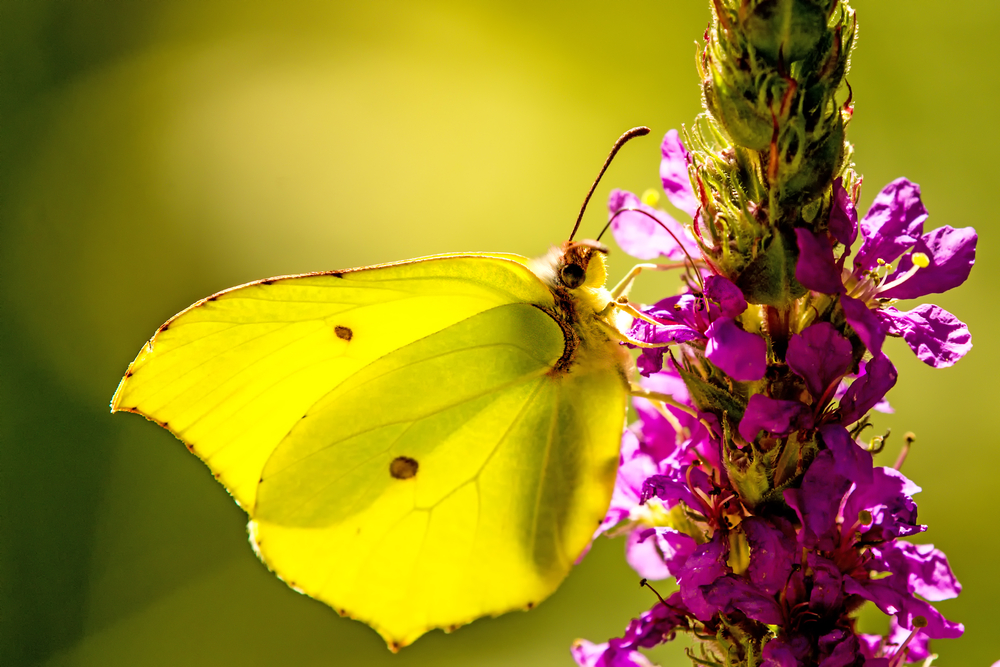The brimstone butterfly (scientific name Gonepteryx rhamni) is a common sight in the United Kingdom and Ireland. Its striking colour and unusual wings-closed resting position make it a very easily identifiable creature that is beautiful and provokes intrigue and mystery.
Named after the Greek god of fire, whose signature accessory is said to be the brimstone (sulfur) flame, there is also a view that the word “butterfly” originates from the yellow colour of brimstones.
Brimstone Butterfly Identification
Brimstones are relatively small butterflies with an average wingspan of about 60-70mm.
Brimstones are sexually dimorphic, meaning both male and females are quite different to one another. The male brimstone butterfly has bright sulphur-yellow colour wings and is very conspicuous in flight. Females are smaller and have pale green, almost greenish-white wings.
Their leaf-like wings on both sexes have tiny orange spots in the centre, and have a veiny texture, again, similar to the leaves of a tree. Its eyes are dark-brown, almost black, and its antennae are long and feathery.

Where To See The Brimstone Butterfly
The brimstone butterfly is found in most of Ireland and many areas of England and Scotland. It has been found as far north as Shetland and in the Faroe Islands. It is also known to inhabit parts of north-western continental Europe, especially Brittany, Belgium, Luxembourg, Germany (in Baden-Wuerttemberg) and Austria.
The brimstone butterfly is active during the day or in warm conditions and will rest at night or on cold mornings. It flies from late March through June, when it eats nectar and lays eggs.
The brimstone butterfly migrates to warmer climates where they overwinter, tend to fly less during cold weather conditions and wet winter months and often return to the same food plants in early spring just before mating begins.

Brimstone Butterfly Habitat
Adult brimstones can be found in most habitats, especially wetland areas, but is most common where there are many flowers and short grass. It is widespread in the south of England and can be seen in gardens and meadows but tends to avoid open woodland.
Common Questions
What plants do brimstone butterflies like?
Brimstone butterflies have a very long proboscis compared to other butterflies, which means they can suck up the nectar from plants that other species cannot, such as teasel.
They tend to have a preference towards purple and pink flowers, such as the purple loosestrife, and those which are nectar-rich such as thistle.

How long do brimstones live?
Brimstone butterflies live longer than most other butterfly species, with an average lifespan of approximately 13 months. Due to its long lifespan, the brimstone butterfly’s life cycle consists of one generation per year.
Where do brimstone butterflies lay their eggs?
Like many other butterfly species, the brimstone lays its eggs on the underside of a leaf. In this case, it’s usually on the bottom of alder buckthorn leaves, which are abundant in damp woodlands.
Is the brimstone butterfly rare?
No, this species is among the most common of the British butterflies and is widespread across the UK, Europe, Asia and North Africa. There is no conservation concern for the brimstone.
Sources and References
- Brimstone (Gonepteryx Rhamni) – butterflyidentification.com

Ash is a contributing author who has been writing about wildlife for as long as he can remember. He has a vast knowledge of many different types of animals, from the tiniest shrews to the great whales that live in the deepest oceans.
